From The Fall Guy to Airwolf: 10 ridiculous TV shows that blew up the 1980s
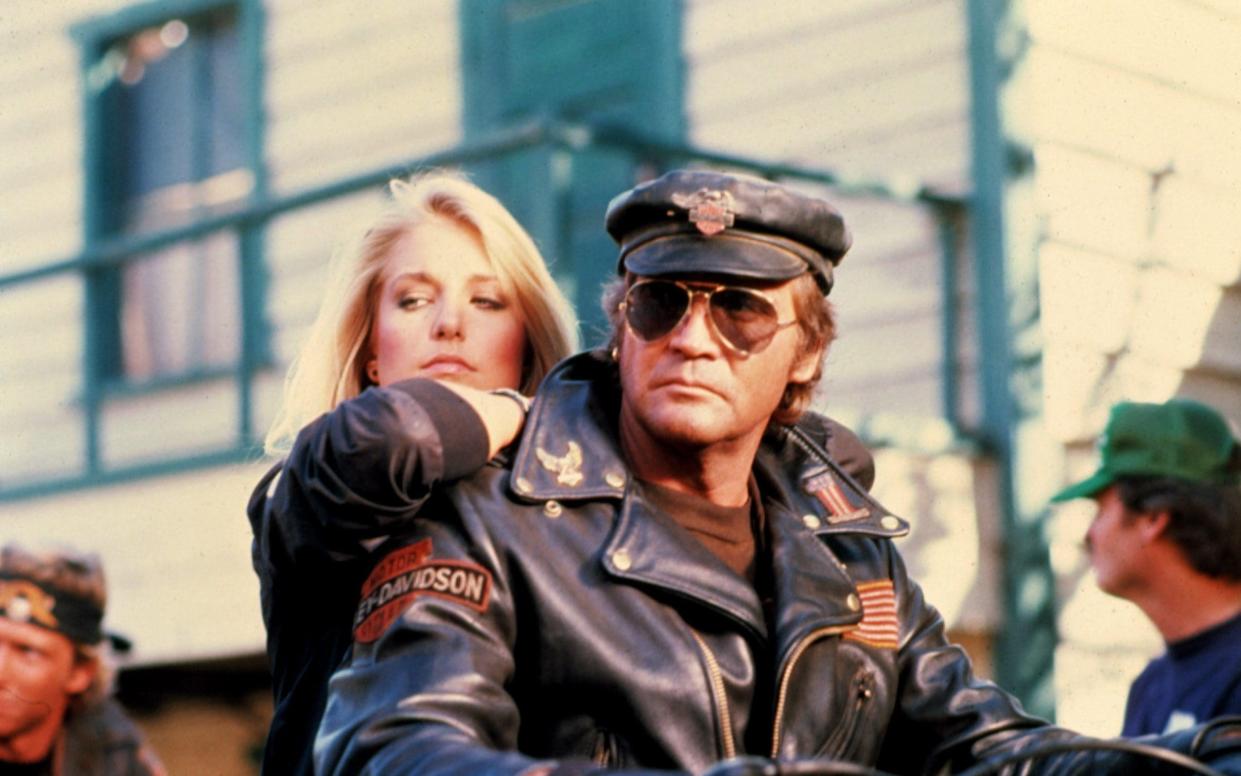
In the new action comedy, The Fall Guy, Ryan Gosling plays a stuntman who must take on leading man duty. Gosling, fresh from his role as Ken, is a self-lampooning man-of-the-moment. But The Fall Guy comes from a different tradition of manliness: men of 1980s TV action.
The Fall Guy is based on a TV series of the same name, which starred Lee Majors and ran from 1981 to 1986. It was part of a loose genre of American action shows, typified by the work of showrunners such as Stephen J Cannell and Glen A Larson, and mostly following the US TV format of weekly adventures and guest stars, and destined to be syndicated forever. Unless they were cancelled after just a few episodes, that is.
Cannell co-created the 1980s’ biggest action hit, The A-Team, and created shows such as The Rockford Files and 21 Jump Street either side of that 1980s peak. Larson, meanwhile, was behind a string of 1980s action shows, including The Fall Guy. Some were successful, others less so, but they were always ridiculous in their own way – another American TV tradition.
Even before the 1980s, Larson was a big name in TV production. He was a singer with pop group The Four Preps before segueing into television (he often provided the theme tunes, too). Larson got his first writing credit on The Fugitive and executive produced the Six Million Dollar Man, starring his future Fall Guy, Lee Majors. He also created Alias Smith & Jones, Quincy ME, Battlestar Galactica, BJ and the Bear, and Buck Rogers.
He was accused of ripping off ideas from popular movies – Star Wars (Battlestar Galactica), Butch Cassidy and the Sundance Kid (Alias Smith and Jones), and Every Which Way but Loose (BJ and the Bear). But Larson, who died in 2014, made no bones about the reality of TV production and network executives, who wanted a production line of already-popular ideas. He explained that networks often responded to pitches by pointing towards hit movies and shows and saying, “You know, we’d really like it if you had something a little more like this.”
Like the recycling of the same episode tropes week-in, week-out, it was a case of following his own formula. Here are 10 of the best – and most ridiculous – 1980s action series.
1. Magnum, PI (1980-1988)
Famous for the moustache and floral shirts, Magnum, PI was created by Glen A Larson and Donald P Bellisario. The long-running series (and still a fixture) tells the story of private detective Thomas Sullivan Magnum IV, played by the magnificent Tom Selleck.
Like many characters from these action series, he’s a former military man – an ex-Navy SEAL – but has settled in Hawaii. He’s an action hero, of course – he gets involved in numerous capers, solving legal issues and crimes that seem way beyond his level of expertise. Magnum – aided by his war buddies – takes on hitmen, war criminals, murderers, hijackers, drug lords, kidnappers, and ghosts of Vietnam, which surface regularly.
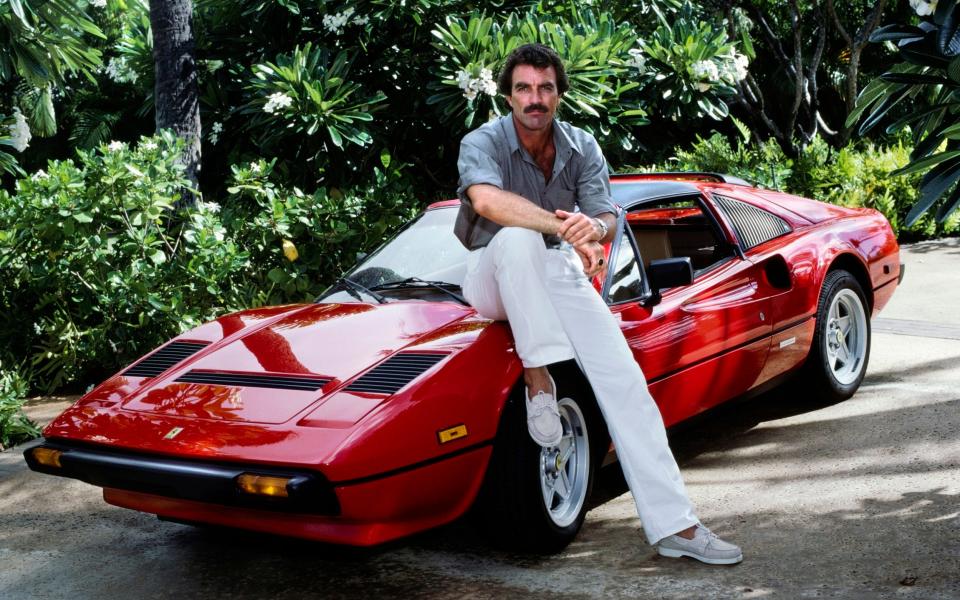
But Magnum is also 1980s television’s foremost blagger: a man of leisure who’s landed a plumb security role on a Hawaiian estate, whose owner he sponges off constantly – staying at the guest house, helping himself to the wine cellar, and driving their Ferrari. Not to mention milking his mate’s helicopter firm whenever a case needs cracking via the air.
Commitments to the show famously cost Selleck the role of Indiana Jones. But Magnum PI remains an 1980s icon itself. There’s a blueprint for other Larson-created action series: the high concept, the daft macho name, the flash cars, and moments of unintentional hilarity.
Most ridiculous moment: It can only be the much-shared moment from season three, when Magnum is attacked by a parrot, so fires back and sends the parrot flying into the helicopter blades.
2. The Fall Guy (1981-1986)
Lee Majors plays Colt Seavers, a Hollywood stuntman by day, bounty hunter by night. He puts his stuntman skills to use in weekly bounty-hunting/crime-busting escapades. See him clinging to cars during high-speed chases, hang gliding away from danger, performing wheelies between articulated lorries, or saving friends from stock footage of explosions.
Like other shows from the Larson canon, it was inspired by popular films of the time, including the 1980 Peter O’Toole comedy, The Stunt Man, and the Steve McQueen bounty hunter thriller, The Hunter, also from 1980.
To the show’s credit, some stunts are cracking – and refreshingly free of CGI. They filmed some of their own stunts, but Larson admitted they used “more stock [footage] than I would have liked”. The studio, 20th Century Fox, would buy in stock stunt footage – or reuse stunts from its own movies – then build episodes around them. They’d even buy in cars to match the ones used in the pre-filmed smash-ups and seamlessly (well, sort of) splice the footage. The Fall Guy series hasn’t maintained (until now, at least) the same cultural currency as the likes of The A-Team or Knight Rider, but it ran for an impressive 113 episodes across five seasons.
Most ridiculous moment: Everything you need to know about The Fall Guy is in its top-tier theme tune and intro. Not just plenty of car crashes and jumping off very high things, but the idea that Seavers is never the lead man but a supporting player who never gets the girl – the spirit of which has carried into the 2024 film.
3. Knight Rider (1982-1986)
There’s no denying the adrenaline-riling nostalgia of the Knight Rider theme (another theme co-written by Larson, though it was partly ripped off from the Procession of Bacchus, taken from the Léo Delibes’ ballet, Sylvia). The electronic juddering captures the mood of the concept – a “shadowy flight into the dangerous world of a man who does not exist”.
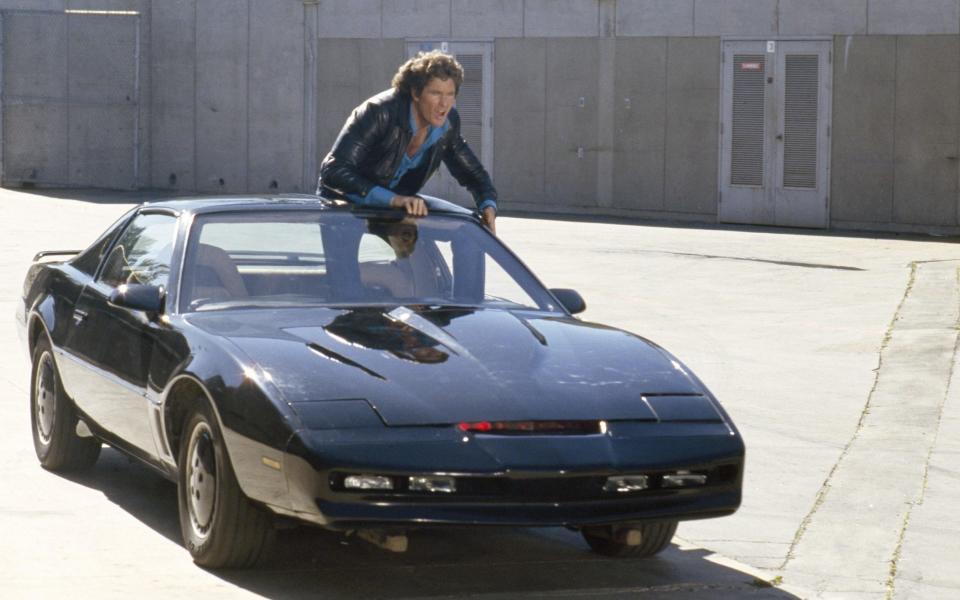
Indeed, Knight Rider begins with Michael Long, a policeman and Vietnam veteran, being shot in the face. A Bruce Wayne-like billionaire rescues Michael and gives him facial reconstructive surgery to look like David Hasselhoff – complete with the bouffant hairdo – and a talking, crime-fighting car named KITT (the Knight Industries Two Thousand).
Going by the name Michael Knight, he drives around sorting out trouble, taking his orders from FLAG (the Foundation for Law and Government).
According to Larson, Universal TV boss Richard Lindheim pitched him a rough idea of “a super car”. The car itself was a customised 1982 Pontiac Firebird Trans Am. Various spin-offs since. “I found out Americans have a love affair with cars,” said Larson about its success. Knight Rider ran for four seasons and 90 episodes, followed by spin-off TV movies and a sequel series.
Most ridiculous moment: Both Michael Knight and KITT had evil twin versions of themselves in different episodes. Garthe Knight, whose face inspired Michael’s reconstructive surgery (it’s Hasselhoff with a little devilish beard and moustache), and KARR, which wants to destroy KITT.
4. The A-Team (1983-1987)
With its militaristic guitar-choking and endless supply of observational clichés – like firing a small army’s worth of weaponry each episode and not leaving a scratch on anyone – The A-Team is the alpha of 1980s action shows. I pity the fool who didn’t watch it on Saturday tea-times.
We all know the premise: Hannibal, BA Baracus, Howling Mad Murdock, and the Faceman – soldiers of fortune, if you will – are on the run from a crime they didn’t commit, so drive around in a big van and sort out problems – often by building a weapon of mass destruction out of some old tat.
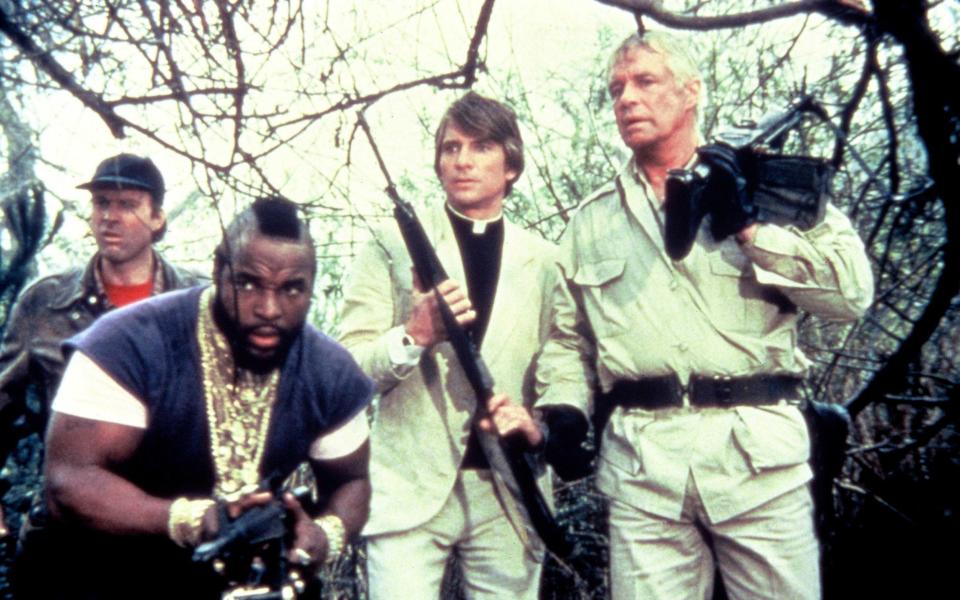
The premise came from Brandon Tartikoff, the head of NBC entertainment, who gave Stephen J Cannell a muddled pitch: something that combined Mad Max, The Dirty Dozen, The Magnificent Seven, and The Hill Street Blues. But with Mr T from Rocky III driving the car.
Cannell, we can assume, loved it when the plan came together. Co-created with Frank Lupo, The A-Team was a mega-hit. For a time, Mr T was the biggest television star in the US.
Like other shows of its ilk, The A-Team lost the plot when the ratings dropped – working for the CIA and adding a fifth member – and the show remains fodder for well-worn gags about its implausibility. (If you are on the run, a pair of dungarees, a Mohican hairdo, big feathery earrings, and heaps of gold chains aren’t exactly lowkey, are they?)
Most ridiculous moment: The flying-phobic BA Baracus protesting “I ain’t gettin’ on no plane, fool” then having to be sneakily sedated. Which – like most things in The A-Team – seemed to happen every week.
5. Manimal (1983)
Another Larson show, Manimal is often included in roundups of the worst TV shows ever. Even Larson himself, being interviewed for the Television Academy Foundation, sniggered at the mention of it.
The idea, he insisted, came from Brandon Tartikoff (the same NBC boss who concocted The A-Team) and co-creator Donald R Boyle.
It stars British actor Simon MacCorkindale as Dr Jonathan Chase, a playboy/crimefighter/shapeshifter whose father gifted him a unique power: to transform into any animal he wants. Think James Bond – including the tux – except he turns into various animals to fight crime, using a particular animal’s skillset to get out of any given scrape. Though he mostly turns into a panther or hawk, because so most of the cash was spent on those transformation special effects at the start (it’s surprising, though, how handy a panther’s claws are for escaping from rope binds). Changes into other animals usually happened off-screen.
Inspired by An American Werewolf in London, the animal transformations were created by the legendary Stan Winston, who won Oscars for the monsters in Aliens, Terminator 2, and Jurassic Park.
It didn’t last long. It was put on hiatus after four episodes and cancelled after just eight in total. Larson may have passed the buck on creating Manimal, but it attempted to bring it back later. Dr Chase cameoed in Larson’s 1990s superhero series, Night Man, about a superhero saxophonist who can detect evil but never sleeps. In Night Man, Chase is now also a time-traveller on the trail of Jack the Ripper. It was an attempt to launch a reboot, with Chase’s shapeshifting daughter.
Most ridiculous moment: Well, let’s be honest, all of it.
6. MacGyver (1985-1992)
Secret agent MacGyver is action TV’s most relentless do-gooder. Working for an expert covert ops organisation, MacGyver supports social justice causes and refuses to carry a gun. Instead, he prefers to escape certain death with out-of-the-box thinking and by crafting problem-solving inventions from everyday items. Armed with a Swiss army knife and some duct tape, he can turn his hand to anything – from liberating oppressed peoples to disarming bombs – with polymath-like hands-on science. Played by Richard Dean Anderson, MacGyver’s only intellectual shortcoming is his mullet.
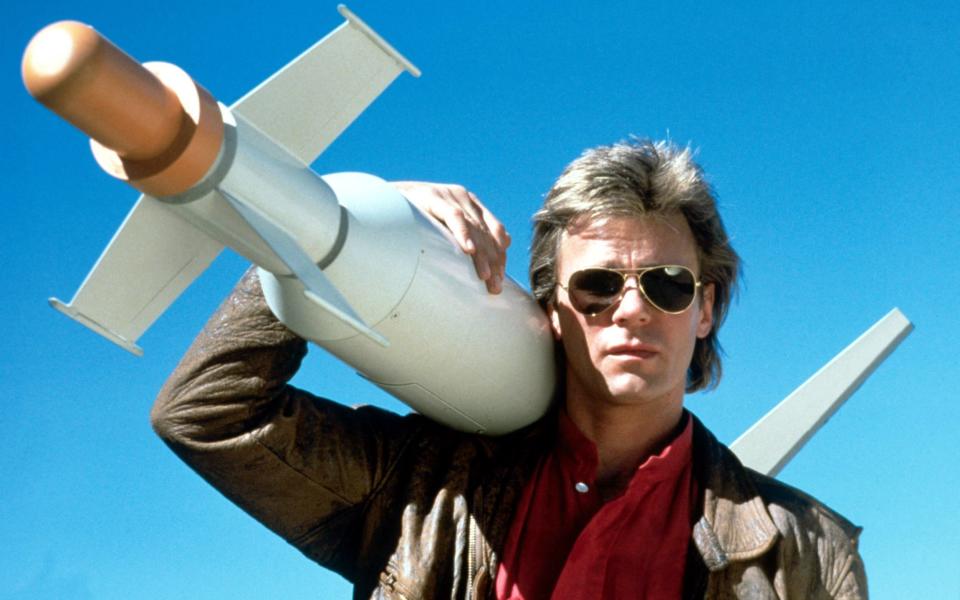
The character was created by Lee David Zlotoff following a pilot development job with the Fonz himself, Henry Winkler (who produced MacGyver). The idea was a hero who had no weapons, no car, no back-up. MacGyver was the antithesis of TV’s more violent heroics. He throws together a bazooka with car parts, cushion stuffing, and a lighter. He brews tear gas from condiments and a hot water bottle. He even rustles up jet packs with power washers and seatbelts.
The MacGyver team had scientific advisors for his tricks and offered financial rewards to fans who come up with their own ideas. It ran for seven seasons, with 139 episodes and two TV movies. It’s been spoofed endlessly, proving its cultural status. The word MacGyver even entered the dictionary as a verb – to MacGyver something.
Most ridiculous moment: MacGyver has MacGyvered too many things to choose the best, but at one point he fixes a broken car radiator by cracking an egg into it. The boiled egg white seals the leak. The idea was sent in by a young viewer. The crew tried it and it worked, so it was put into the show.
7. Street Hawk (1985)
In the same way that Glen A Larson cashed-in on popular ideas from elsewhere, Street Hawk – created by Paul M Belous and Robert Wolterstorff – feels like a two-wheeled spin on Knight Rider.
In the show – which lasted just 14 episodes – pop star Rex Smith plays Jesse Mach, an injured motorcycle cop and dirt-bike racer who turns to fighting crime as a mystery rider with a computerised motorbike. Or, as described by the intro, “an all-terrain attack motorcycle designed to fight urban crime, capable of incredible speeds up to three hundred miles an hour, and immense firepower”. A bit like RoboCop but, well, a bike.
Jesse – reduced to a police PR job by day – targets the drug smuggler who killed his partner and generally cleans up the mean streets of LA, while the creator of the bike monitors the city from his Master Control Monitor.
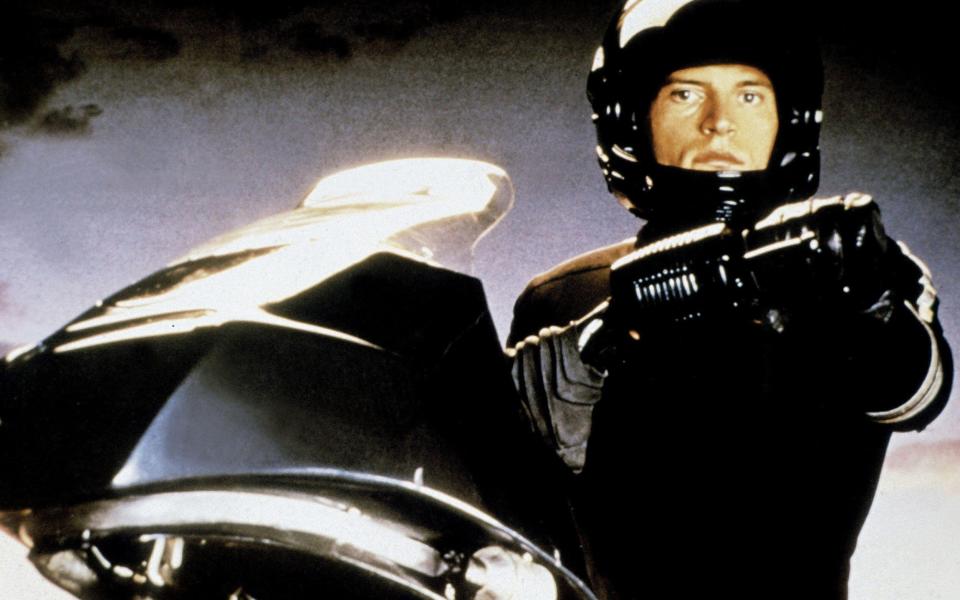
With a theme tune by Tangerine Dream, it’s obviously cheesy but there’s something about the tone of the show which has somehow aged better.
The bikes were based on Honda XL500 and Honda XR500 models, with Honda CR250 dirt-bikes handling the action scenes. Multiple bikes were kept on standby because they would fall apart during the stunts.
Most ridiculous moment: The second episode stars a fresh-faced, big-haired George Clooney (a real-life pal of Rex Smith). Clooney is gunned down and dies in Street Hawk’s arms, a bit of am dram-level naffery.
8. Automan (1983-1984)
The main players in this show readily admitted that it was TV’s answer to Tron. In fact, Larson described how the idea came from people who’d worked on the Disney film and came to him to pitch something similar.
It tells the story of Walter Nebicher, played by Desi Arnaz Jr, a nerdy police officer with an especially smart computer. The computer creates a hologram that’s somehow able to transfer from the software to the real world, becoming the superhero Automan, played by Chuck Wagner.
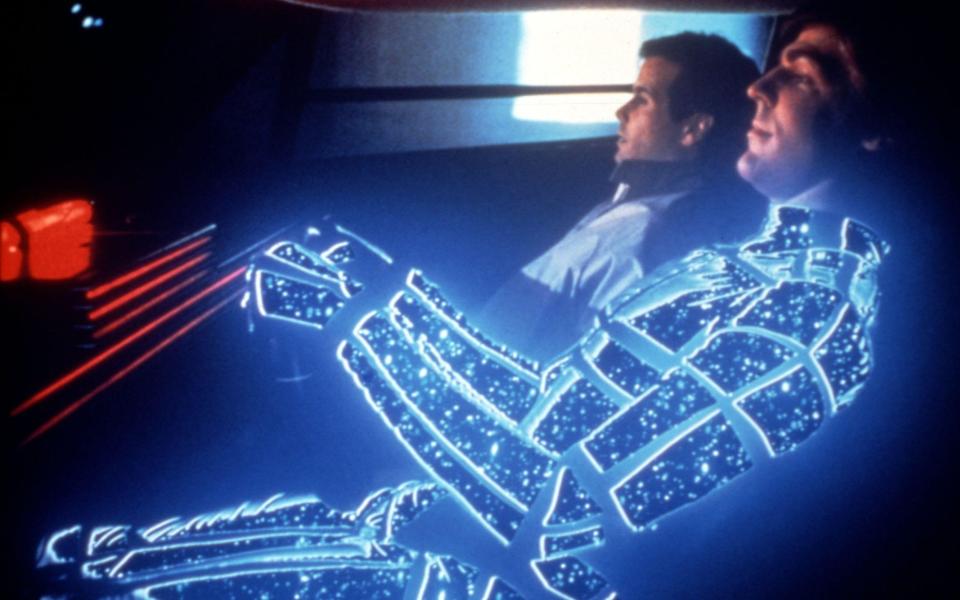
Using similar neon effects to Tron, the show – according to Larson – was “way ahead of its time”. Which is funny because it looks so ludicrously campy now. It’s a bit of a nod forward to concepts of Wreck-It Ralph and Ready Player One (Automan says he once met Donkey Kong). What’s most interesting is the idea that Automan and Walter are like a superhero and secret identity – just a 1980s computer version.
Automan also has a sidekick called Cursor, a cheeky pixel that can outline and bring to life hologram vehicles, including the Autocar (and neon-trimmed Lamborghini) and Autochopper. Even a tank when required.
Amusingly, they couldn’t figure out how to make the Automan neon glow effect work in the day, so Automan did most of his crime-fighting at night. It was expensive to make and only lasted 12 episodes.
Most ridiculous moment: Automan’s powers include super strength, firing bolts from his hands, and sucking electricity from plug sockets. In one episode, however, he was programmed to dance like John Travolta in Saturday Night Fever – including the white suit and flares.
9. Airwolf (1984-1987)
Airwolf, about a high-tech attack helicopter, is sometimes written off as a rip-off of similarly themed ABC series, Blue Thunder. But the idea came from Magnum, PI co-creator Donald P Bellisario, who had featured a rogue combat pilot in Magnum PI – an attempted backdoor pilot for a new show – then rejigged the idea as Airwolf on CBS.
Airwolf is about a rogue pilot named Stringfellow Hawke – the most ridiculously named hero yet – played by Jan-Michael Vincent. After recovering the helicopter for “The Firm”, an especially secretive arm of the CIA, Hawke takes command of the chopper (a Bell 222 with cosmetic modifications) and carries out missions. His crew includes a pilot played by Ernest Borgnine, Oscar winner and leader of The Wild Bunch.
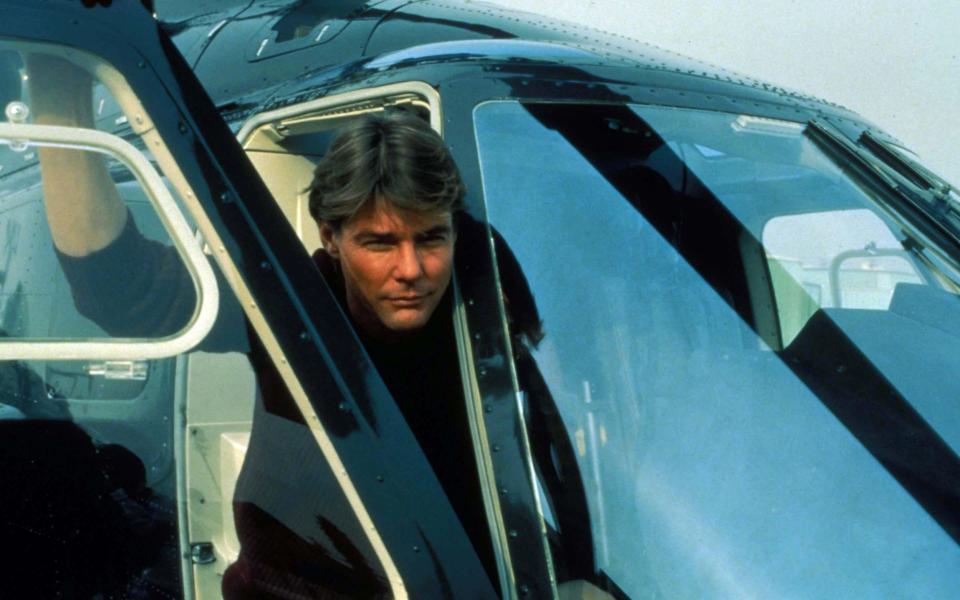
It began as a darker, espionage-based adventure – shadowy government and Cold War paranoia – but reverted to lighter adventure-of-the-week fare. CBS cancelled Airwolf after three seasons, but it relaunched on USA Network for one final season with a completely new cast.
CBS had initially cancelled Airwolf due to the high cost and low ratings – but also because of the alcohol and drug problems of Jan-Michael Vincent. His wife accused him of abuse, and he was in a series of near-fatal car wrecks. In one 1996 crash he snapped his neck. He died in 2019, after having one of his legs amputated due to health problems.
Airwolf itself met a tragic fate. The helicopter was sold as an air ambulance in Germany. In 1992, after flying a young burns victim to hospital, the helicopter crashed in bad weather and killed all three crew members.
Most ridiculous moment: There’s a distinct pleasure in seeing a supersonic, heavily-armed helicopter blasting missiles at a band of baddies armed with handguns.
10. The Highwayman (1987-1988)
Even as the 1980s rolled on, TV producers still wanted their fill of computerised crime-fighting vehicles. Following the high-speed, high-tech shenanigans of Knight Rider and Street Hawk, Larson and Douglas Heyes created The Highwayman.
The short-lived series stars Sam Jones – best remembered as Flash Gordon – as an apocalyptic lawman, known only as The Highwayman, or “Highway” for short. He drives a futuristic truck that turns invisible and has a built-in Gazelle helicopter and Lotus Esprit, which detach from the truck and roar into action when things kick off.
It’s shamelessly Mad Max-esque, with a bit of The Terminator thrown in. The Highwayman feels harder-edged than some of Larson’s other 1980s series – a muscular, petrol-powered Western with explosions and giant handguns – but it’s no less hammy: all scowling menace in leather shoulder pads and acting that’s borderline criminal itself.
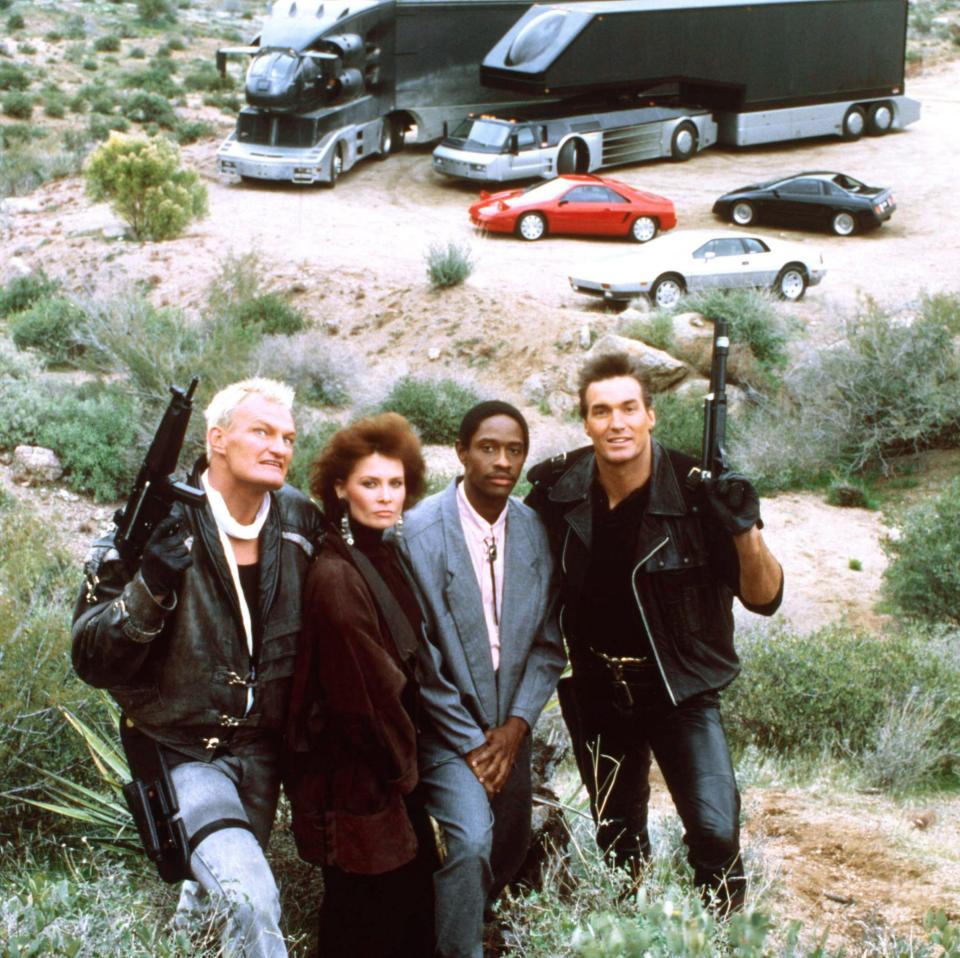
Set in a near future – “where the laws of the present collide with the crimes of tomorrow” – but they’re quite obviously in 1987 America (except for the episode when they travel back to 1945 to solve one particular case).
The hue and style feel like 1980s TV bleeding into the 1990s. It ran for just one season, with a pilot film and nine further episodes.
Most ridiculous moment: All scenes with Highway’s fellow lawman, Jetto (Mark Jackson) – an Australian sidekick who flings a deadly boomerang – are excruciating.

 Yahoo News
Yahoo News 
